A Room at the Top It has been a few years since I set off alone to research new sites and experiences in Sicily to offer my tour groups. The days that I spent on this incredible island during that journey produced a reservoir of small racconti (stories). Many were created by my experiences navigating the public transportation system, some by the personalities of the proprietors and their charming, if often quirky, lodgings and still others by the kindness of the Sicilians that I met along the way. One of the towns on my itinerary was Ragusa in southeastern Sicily. In this part of the island the public transportation is a challenge because there is a scarcity of trains and the bus service is operated by several different companies. Eventually, with a few bumps along route, I reached the local bus station in Ragusa, located the bus I thought I needed and boarded. I only had a sketchy map for the location of the B&B that I had booked online and I was not at all sure where I needed to disembark. The other bus riders soon understood my dilemma and collaborated in typical Italian fashion and got me off at the right stop. I shouted grazie and arrivederci and headed into the warren of back streets in search of the Arabia Fenice B&B, my nest to be for the next three nights. Once found and the buzzer rung, the door was opened by a tall, stern looking man, Manuele. With few words he led me up a narrow, rickety staircase to an attic room with a low ceiling and a balcony enclosed by a solid wall. the entire building seemed a bit seedy. I began to feel uneasy. As far as I could tell, Manuele was the only caretaker. There was no evidence of a wife or even other guests. Was I totally alone with this stranger who had a key to my room? Being a solo woman traveler can sometimes lead to a bit of paranoia. Putting those misgivings aside temporarily, I returned to the tiny kitchen-dining area to officially check in. My host asked what time I wanted breakfast. As my previous experience had taught me, no matter what time I said, it would not be served before 7:30. After attempting to negotiate an earlier time with no success, I told Manuele that what I really would like was to have coffee soon after I woke up around 6:00. It was not a problem he said. Before retiring for the night, around midnight, he would leave a thermos with coffee and one with milk outside my door. With that generous offer and seeing two other guests in the dining area, I began to feel a bit more comfortable with my situation. o True to his word, when I cracked open the door in the morning and peeked out, set on a small table there was a thermos of hot coffee and a thermos of hot milk with a cup and saucer carefully arranged on a tray with everything else I would need to enjoy my early morning coffee. Each of the three mornings of my stay I awoke to the same coffee tray without ever mentioning it again. As it turned out, I needn't have worried about my well being in this ramshackle little place. My host was a dear fellow and I came to enjoy my little hide-a-way at the top of the stairs. Each day I ventured into the unique town (actually a set of two towns, see below), discovering treasures, sampling the eateries and visiting the shops and museums, happy to return to my cozy room each night. Not only did Manuele supply me with the early morning coffee tray, he insisted on driving me to the bus station when I left and wished me a warm farewell. Ragusa, SicilyRagusa was one of the towns destroyed in the Val d'Noto region of Sicily during the catastrophic earthquake of 1693. When it was time to begin rebuilding the town there was a difference of opinions among the residents. Some wanted to rebuild a distance away from the original town, a location deemed safer in case of a future earthquake (teremoto). However, a significant number of people wanted to rebuild in the original location. The solution was to create two towns sharing the same name connected by a long stone stairway. Eventually the the names were altered to Ragusa Ibla (the original location) and Ragusa Superiore (the new, higher location). Ragusa, like other towns in this area rebuilt after the earthquake, such as Noto and Catania, were constructed in the modern architecture of the day, Sicilian Baroque. This included elaborate, three-tiered, concave facades of the churches and public buildings adorned with Corinthian columns and many curves and flourishes. The buildings were also built using a great variety of local stone; from the warm, honey-colored stone in Ragusa and Noto to the dark volcanic rock in Catania. Note: For those of you who are fans of the Sicilian detective series Inspector Montalbano based on the stories written by Andrea Camillieri, you might be interested to know that many of the scenes are filmed in and around Ragusa. Salute,
Andrea travelinitalia.com
0 Comments
The Italians love the Christmas season so much they celebrate it for a whole month! Their traditions include many which can be traced to the ancient Romans. Some of these are celebrated throughout Italy and others are specific to a particular region. The focal point of decoration is the Nativity scene, Presepio. Italians take great pride in the creation of the manger, which was actually a sort of clever publicity stunt thought up in 1223 by St. Francis of Assisi, who wanted to involve the peasants in celebrating the life of Jesus. Bagpipes are the most common Italian Christmas sound. The zampognari, the shepherds who play the bagpipes, come down from their mountain homes at Christmas time and perform in the market squares. The playing of bagpipes is popular in the regions of Calabria and Abruzzo and in the piazzas of Rome. One of my very favorites is the tradition of the children writing letters to tell their parents how much they love them. The letter(s) are normally placed under the father’s plate and read when dinner is finished on Christmas Eve. The Tree of Light is a wooden frame in the shape of a pyramid with several tiers of shelves decorated with a Nativity Scene, colored paper, gilt pine cones and miniature colored pennants with candles attached to the sides and a star or small doll at the apex. The Urn of Fate is filled with small gifts and the family takes turns drawing out a gift until all gifts are gone. On the Feast of Epiphany (Jan 6) La Befana (a kindly witch) brings toys to the children and sometimes a piece of coal that is actually, nowadays, carbon dolce (rock candy that looks amazingly like coal). The New Year, Capodanno, involves a variety of customs primarily having to do with throwing out the old and preparing for the new. On the last day of the year a Yule Log is kept burning to keep evil spirits at bay because these nasty spirits don’t like fire. Likewise, the elaborate fireworks displays on New Year’s Eve keeps those same spirits away because they don’t like loud noise either. In southern Italy, especially in Naples, old pots, pans, clothing and even appliances and furniture are thrown out the windows to represent “letting go” of the past and preparing for the future. Old crockery is also thrown out at midnight lancio dei cocci, specifically from the sitting room window and even inside. Be sure to look up when walking through Naples at this time of year.
Wearing new, red undergarments on New Year’s Eve brings good luck. These items must be given as a gift and thrown away after January 1st in order for the power against evil spirits to be effective. For centuries red has been used to exorcise war and catastrophes. Le Strenne are simple gifts that are given at New Years. This tradition can be traced back to the ancient Romans giving gifts to each other to increase well being and good luck for the New Year. Kissing under the mistletoe on New Year’s Eve is a tradition traced to ancient times when this plant was thought to be magical with the ability to induce fertility and love. Eating grapes at midnight on New Year’s Eve is a relatively newer tradition traced to the Iberian Peninsula and introduced in Italy by the Spaniards. At midnight people offer each other twelve grapes, each symbolizes a golden coin for each of the twelve months of the year and represents abundance, fertility, plenty and good luck. The game of Tombola (similar to lotto) is traditionally played on New Year’s Eve. This game was introduced to take the place of gambling in the 18th century. Although legal in Naples (it was a source of revenue for the Kingdom of Naples), gambling was not tolerated by the church for moral reasons. Doors and windows are kept open on New Year’s Day to let in good spirits and to create a draft to blow the evil spirits away. Food, of course, is an important component in the Italian Holiday Season. Pesce (fish) is served for cena (dinner) on Christmas Eve. On December 25th pranzo (lunch) is the important meal and traditional foods are served depending on the region. For La Sera di Capodanno (New Year’s Eve), there is a cenone or grande cena (elaborate dinner). Throughout Italy, Lentichie (lentils) are served and represent money and good luck. Figs and figs in honey are eaten in Naples to ensure a sweet new year and a bay branch for good fortune, both traditions still practiced as in ancient Roman times. The Italian Holiday Calendar December 8 the celebration of L’Immacolata Concezione (the Immaculate Conception) December 13 La Festa di Santa Lucia December 24 La Vigilia di Natale (Christmas Eve) December 25 Natale (Christmas) December 26 La Festa di Santo (marks the announcement of the birth of Jesus and the arrival of the Wise Men (Mostrarmi) December 31 La Festa di San Silvestro or La vigilia di Capodanno (New Year’s Eve) January 1 Il Capodanno (New Year’s Day) January 6 La Festa dell Epifania (The Epiphany). I hope you have enjoyed this glimpse into the Holidays as celebrated in my favorite European country—Italy! Buon Natale e Buon Anno! Andrea Aldrich Travel in Italia Ciao a tutti! This past April I spent several glorious days in Tuscany with the witty and wonderful people on my Tastes and Traditions of Tuscany tour. For ten days we ate foods fit for the gods and tasted the exquisite wines of Montalcino (Bunello), Montepulciano (Vino Nobile), and Chianti (Chianti classic). When the last glass was emptied and the final crostini ingested, I hopped aboard the train heading south along the Tyrrhenian Sea toward Sicily. I was traveling to Sicily to do some scouting to make final decisions for my September tour. My goal was to preview new accommodations, meet some of the people I would be working with during the tour and get a better understanding of the public transportation situation throughout the island. My first stop was Palermo where I met Vittoria and Francesco at their medieval palazzo, Torre dei Frederico. My “room” was an entire apartment furnished with elegant 18th and 19th century pieces and the tile-paved lobby was complete with palm trees and a vintage racecar. When I was too tired to go out to dinner after I arrived and was going to settle for a glass of wine and bed, my hosts insisted I select slices of torta from their kitchen to take to my room. Vittoria is a quintessential Italian businesswoman, big hearted but a strict taskmaster to her staff. The breakfasts were served family style in the formal dining room and I enjoyed chatting with travelers from a variety of countries. Vittoria is really looking forward to meeting our group in September. While in Palermo I met with the accomplished guide and author, Jacqueline Alio, who will lead our group through the streets of her city and educate us about its complicated history. She was born in California to Sicilian parents and the whole family returned to Palermo permanently in 1985. She has seen many changes during the last 30 years, the most significant being the diminished influence in Sicily of the Mafioso. She says the whole personality and spirit of her city has changed for the better. Bravo! From Palermo I took the bus to Sciacca, a historic seaport on the southern coast, appealing to very few tourists, Sciacca is known for its ceramics, thermal baths and the panoramic piazza Scandaliato. The charm of the bright, ceramic tile covered façade of the B&B I had booked turned into a dull and lackluster interior but my room had a tiny balcony with a nice view of the picturesque lane outside. I have never been comfortable eating alone in restaurants but this night I found a neighborhood trattoria down a narrow viale and was treated to a tasty meal served by the very gracious owner who made me feel welcome and comfortable. Boarding another public bus I headed for Agrigento. The B & B where I stayed is owned and run by Francesco, who is assisted by his well cared-for cats. He has turned the building once owned by his ancestors into the most charming and beautiful place I think I have ever rested my travel weary self. There are three or more terraces overlooking the temples and the sea all dripping with gorgeous, colorful geraniums, palms and cacti. Inside, the furnishings have been tastefully chosen and under ones’ feet are lovely blue, white and yellow tiles. A cherry on the top of this delicious lodging is a baby grand piano often played by Francesco himself. I can’t wait for my group to have the experience of staying here while we explore the Valley of the Temples and the streets of this medieval town. The journey to the next town, Ragusa was somewhat difficult. In southeast Sicily there are numerous bus companies, each with its own geographical service area. A rider must transfer at least once to reach most destinations. This coupled with limited or no service on weekends and confusing information about where, when and how to find the correct bus or buy tickets, can make for a frustrating and challenging journey. Knowing the language was a big help and eventually I was able to find my way after a few quirky experiences but it is not the best or most efficient method to see this part of Sicily. We will have a rental vehicle at this point in the tour. Ragusa was one of the towns destroyed by the earthquake in 1693 that devastated southeastern Sicily. Many of these towns were rebuilt on “safer” ground in the then modern architectural style of Sicilian Baroque. When the city fathers chose a new location to rebuild the town of Ragusa, many of the residents of the first location balked and rebuilt their town in the original place. The result was two towns with the same name less than a kilometer apart connected by a long, steep staircase. Today the city has been combined into one municipality with the two sections given the names of Ragusa Ibla and Ragusa Superiore. My B&B was very basic and my room was in the attic with a tiny balcony and no view. Manuele, was a gracious host and more than made up for the disappointing accommodations when he volunteered to leave a thermos of hot espresso coffee and another of hot milk by my door before he went to bed so I would have coffee ready to drink first thing in the morning. He also offered to drive me to the bus terminal in his car when I was departing so I would not have to walk the considerable distance. Grazie Manuele. (FYI: Ragusa today owes some of its renewed vitality as the location of the filming of the Italian TV series featuring Commissario Montalbano.) My last stop in Sicily for this trip was the upscale but charming town of Taormina, high above the Mediterranean Sea and in the shadow of Mt Etna. I revisited the beautiful Greek theater and meandered the narrow streets filled with shops and restaurants. The next day it was time to leave Sicily and head back north to Rome and then home. The taxi driver who took me to the train station told me it was the very same station used in the filming of the movie, “The Godfather.” I have to say it was the most picturesque station I have ever seen, situated by the sea and full of 19th century charm. Of course a cheap and much faster method to reach Rome would have been a short flight from the Catania airport but I love to ride on trains and this route along the sea is especially appealing to me. The train cars that make the trip between Sicily and the mainland of Italy are actually loaded onto a ferry for the crossing of the Straits of Messina. On my trip to the island this loading took at least two hours! Thankfully, for the return trip the loading was swift and we were across and on our way north in no time.
After a night in Rome I was on my return flight and on another ferry to my home on Vashon Island, reminiscing about my experiences on that other island an ocean away and looking forward to sharing its beauty and diversity to my tour group in just a few months. Arrivederci, Andrea www.travelinitalia.com The Tastes and Traditions of Tuscany tour for Spring 2016 has just concluded. We spent ten joyful days of gastronomical and visual delights in this incredibly beautiful region of Italy. The flavors and aromas of the traditional foods and extraordinary wines, the picturesque villages, the jaw dropping views and the palette of colors in the gardens and landscapes made this trip a veritable feast for the senses. On the first afternoon Rimigio, our lively driver, and I greeted our group at the station. When all the luggage and bodies were piled into the van we headed for the town of Contignano. The short ride was filled with accounts of experiences just past and those anticipated. We were a varied and entertaining collection of personalities. Included among us were wine producers (Palouse Winery) and a cheese maker all eager to learn about the growing and production techniques of these products at the farms and vineyards we would visit. Four of the group were from Vashon Island, WA but had never met until they stepped off the same train in Chiusi, Italy! Our host and my good friend, Giuseppe Muziarelli, greeted us warmly when we arrived at La Montalla, the farmhouse where we would stay for the next ten days. A talented, local cook, Eufemia, prepared a delicious traditional meal for us and then, when full and drowsy, we all slipped into our cozy rooms for a quiet night of much needed sleep. Our first full day began with a tour of one of the five wineries we would visit during the trip, Fattoria dei Barbi. This vineyard and cellar, as well as the Casanova di Neri winery, are in the wine zone known for Brunello di Montalcino. We also would visit the Romeo winery in the zone of the Vino Nobile di Montepulciano and two wineries in the Chianti Classico zone, Rocca delle Macie and Terre di Melazzano. We met the owners and wine makers and were guided through their cellars and given explanations of the procedures involved in the growing, harvesting, ageing and production processes. All had special tastings for us and provided lovely spreads of foods to accompany their wines. Between the winery visits we explored hill towns such as Pienza, Siena, Montepulciano, San Querico, Montalcino, Radicofani and Castiglione d’Orcia. Our itinerary also included the La Foce estate of Iris Origo where the fragrance of the wisteria in full bloom accompanied us as we meandered with our guide, Sybilla. Always a treat, Giuseppe conducted a tour for us of the cellars below the “castle” where he and his family live in Contignano. This structure has been in his family for many generations and Giuseppe is always willing to share his vast knowledge of the history of the town and the region. Something new this year was a guided tour of the Fortezza of Radicofani by Giovanni who told us the legend of Il Tacco, the Robin Hood style brigand who lived in the fortress during his life. The views of the region from this vantage point are phenomenal! Those of us who were able to cope with the dizzying height climbed to the pinnacle of the tower. After our tour a luncheon was prepared for us by Giovanni and his son and included two types of pasta and pork ribs cooked in a wood fired oven. Meraviglioso! Whether breakfast at the farmhouse, an afternoon gelato or a more complicated meal, the food we consumed was incredible! We toured the cheese making facilities of the family-run pecorino cheese farm, Fattoria Pianporcino. After the tour we sat down to a beautiful luncheon and tasted the different cheeses and luscious yogurt. One evening we had a delightful dinner at the hilltop, all-natural farm and restaurant of Podere di Casale, where cooking and cheese making classes are also given. More than once we found ourselves returning to the local restaurant of La Fattoria Bellandi in Contignano for a delicious meal prepared by the owner and chef, Enza. Every meal we had was wonderful but our favorite had to be the second dinner prepared by Eufemia where we acted as her assistants as she taught us how to make her famous spinach ravioli with ragu sauce and afterwards we ate the results! On our final day we had a guided tour of the fifth to second century BC Etruscan tombs near Chiusi and then explored the beautiful Museo Archeologico Nazionale in the historic center of Chiusi. Our last meal together was the traditional Tuscan dish of Bistecca Fiorentina at a small restaurant in the village of Bagni Vignoni, where just a few days earlier we had soaked in the thermal pools.
The following morning we said our heartfelt goodbyes to new and old friends and went our separate ways, a few had additional travel plans and others returned home. I was off to Sicily for a scouting trip to prepare for the Fall tour. a presto, Andrea P.S. More info about the Tastes and Traditions tour or the Sicily-Amalfi Coast tour can be found at www.travelinitalia.com 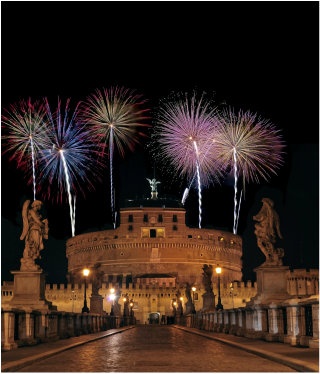 Always attempting to improve my mastery of the Italian language, I am again enrolled in a language class. Before the Holiday break, our teacher, Michela, described some of the Christmas and New Year’s traditions observed in her native Italy. My interest was piqued and I wanted to learn more. Here are some of my favorites, beginning with a list of the special days celebrated in Italy during this time of year: December 8 the celebration of L’Immacolata Concezione (the Immaculate Conception) December 13 La Festa di Santa Lucia December 24 La Vigilia di Natale (Christmas Eve) December 25 Natale (Christmas) December 26 La Festa di Santo (marks the announcement of the birth of Jesus and the arrival of the Wise Men (Mostrarmi) December 31 La Festa di San Silvestro or La vigilia di Capodanno (New Year’s Eve) January 1 Il Capodanno (New Year’s Day) January 6 La Festa dell Epifania (The Epiphany). Gift giving and preparing for the New Year involves many traditions, many of which can be traced back to the ancient Romans. Some are celebrated throughout Italy and others are particular to different regions of the country. I am particularly fond of the tradition of children writing letters to tell their parents how much they love them. The letter(s) are normally placed under the father’s plate and read when dinner is finished on Christmas Eve. The Tree of Light is a wooden frame in the shape of a pyramid with several tiers of shelves decorated with a Nativity Scene, colored paper, gilt pine cones and miniature colored pennants with candles attached to the sides and a star or small doll at the apex. The Urn of Fate is filled with small gifts and the family takes turns drawing out a gift until all gifts are gone. On the Feast of Epiphany (Jan 6) La Befana (a kindly witch) brings toys to the children and sometimes a piece of coal that is actually, nowadays, carbon dolce (rock candy that looks amazingly like coal). The New Year (“Capodanno”) involves a variety of customs primarily having to do with throwing out the old and preparing for the new. On the last day of the year a Yule Log is kept burning to keep evil spirits at bay because these nasty spirits don’t like fire. Likewise, the elaborate fireworks displays on New Year’s Eve keeps those same spirits away because they don’t like loud noise either. In southern Italy, especially in Naples, old pots, pans, clothing and even appliances and furniture are thrown out the windows to represent “letting go” of the past and preparing for the future. Old crockery is also thrown out at midnight (“lancio dei cocci”), specifically from the sitting room window and even inside. Be careful where you walk if you are in Naples this time of year. Wearing new, red undergarments on New Year’s Eve brings luck. These must be given as a gift and thrown away after January 1st for the power against evil spirits to be effective. For centuries red has been used to exorcise war and catastrophes. Le Strenne are simple gifts that are given at New Years. This tradition can be traced back to the ancient Romans giving gifts to each other to increase well being and good luck for the New Year. Kissing under the mistletoe on New Year’s Eve is a tradition traced to ancient times when this plant was thought to be magical with the ability to induce fertility and love. Eating grapes at midnight on New Year’s Eve is a relatively newer tradition traced to the Iberian Peninsula and introduced in Italy by the Spaniards. At midnight people offer each other twelve grapes, each symbolizes a golden coin for each of the twelve months of the year and represents abundance, fertility, plenty and good luck. The game of Tombola (similar to lotto) is traditionally played on New Year’s Eve. This game was introduced to take the place of gambling in the 18th century. Although legal in Naples (it was a source of revenue for the Kingdom of Naples), gambling was not tolerated by the church for moral reasons. Doors and windows are kept open on New Year’s Day to let in good spirits and to create a draft to blow the evil spirits away. Food, of course, is an important component in the Italian Holiday Season. Pesce (fish) is served for cena (dinner) on Christmas Eve. On December 25th pranzo (lunch) is the important meal and traditional foods are served depending on the region. For La Sera di Capodanno (New Year’s Eve), there is a cenone or grande cena (elaborate dinner). Throughout Italy, Lentichie (lentils) are served and represent money and good luck. Figs and figs in honey are eaten in Naples to ensure a sweet new year and a bay branch for good fortune, both traditions still done as in ancient Roman times. I hope you have enjoyed this peak into the Holidays as celebrated in my favorite European country—Italy! Buon Anno a tutti and I wish you a Happy and Healthy 2016! Saluti Cordiali, Andrea Aldrich Travel in Italia, Small Group Tours of Italy 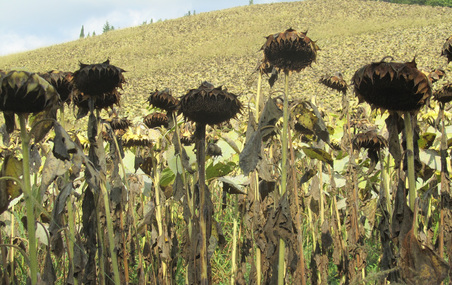 Heavy heads of sunflowers Heavy heads of sunflowers This morning we left Contignano, Toscana and drove over the mountains into the region of Le Marche, Italy. We were on our way to the location that would be our home for the next two months. Our track was a narrow mountain road that serves as the main artery from west to east. Originally built for carriages and carts, it is so narrow that in some villages the corners of the medieval stone buildings had to be cut away so the larger, modern-day trucks could squeeze through. Mountain scenery of woods and craggy cliffs eventually gave way to rolling hills and croplands with field after field of sunflowers just past their prime, their heavy heads bowed low, waiting for the (grim?) reaper. We happened upon one field that was still in full bloom and Jim snapped the picture included here. 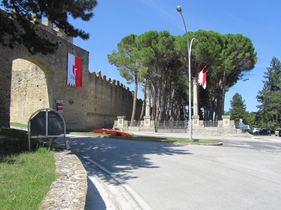 Porta Picena, San Ginesio Porta Picena, San Ginesio As arranged, we met our host, Omi, at the Porta Picena gate of the walled town of San Ginesio and followed her home. We had difficulty keeping up with her down the twisting, rough road. She had well adopted the Italian penchant for speed. The small estate, Casa Orchidea, where she, her husband, Nigel and their daughter spend their summers, is named for the tiny wild orchids that grow in the surrounding woods. The house, cantina, (our temporary abode) and vineyard are situated among rolling hills with patches of forests and stunning views of the Sibillini mountains. Just three kilometers away is the picturesque village of San Ginesio where we would visit regularly for our groceries, dinners out and caffé, especially on market day. 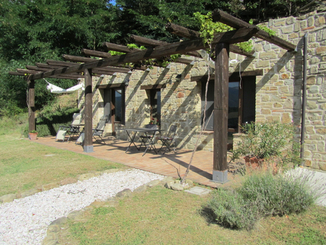 The Cantina The Cantina On our first night in the cantina, we sat outside in the warm air under an umbrella of stars and a perfect crescent moon, listening to a symphony performed by a thousand crickets. We could not take our eyes off the sky. So many stars! (plus a satellite or two). We were looking forward to our stay in this special place. Our responsibilities were to take care of the small vineyard, keep the gardens and grounds in shape and help with harvesting the grapes and wine making. It was a “house sitting” position we found through a website we had joined a year previous. After a few days of settling in and getting acquainted with our hosts, they returned to England and we were on our own. We began to investigate our environs. The first night was a visit to San Ginesio. We had pizza for dinner and headed for the car but got confused in the dark, unfamiliar town and could not find where we had parked. Feeling stupid to be lost in such a small place, we meandered the deserted alleys and passageways. Rounding one corner we came face to face(s) with what appeared to be hundreds cats! Huh? Were we seeing things? Had we drunk too much wine at dinner? At first unnerved, ready for a possible feline assault, we soon realized the kitties were just waiting for food to be put on the assortment of dishes on the ground. Laughing at our selves, we skirted the cat pack and continued on our quest to find our car. Finally successful we drove down the hill and back to our cozy cantina. Our first exploration was an interesting outing to say the least and a reminder of how many, many Italians are dedicated to caring for the indigent cat population. 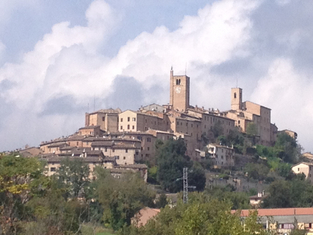 The hill town of Sarnano The hill town of Sarnano Whenever we had days with no tasks to attend to, we headed out to discover more of Le Marche. Like most areas of Italy, towns were built on hills for defense purposes. The hills are plentiful here and on every hill perches a town, most with their medieval walls intact. At first glance the towns seem similar but on closer inspection reveal their own unique identity. A caffé was a requisite part of our visit to a village and then a walk through the streets peeking in shops, museums and churches. We often enjoyed a chat with a local who was outside watering plants or out for a stroll. 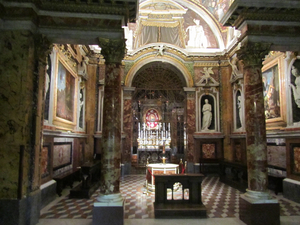 A view inside a "jewel box" A view inside a "jewel box" The churches were like jewelry boxes, the stark, unadorned facades opening to reveal the glittering of crystal and gold leaf, glistening stone columns and marble floors and colorful frescoes and mosaics. Most had a crypt with an elaborate coffin housing the proprietary saint (or a body part). These village visits were one of our favorite pastimes and the list of towns expanded to include such places as Amandola, Sarnano, Tolentino, Loro Piceno, Potenza, Ofida, San Severino and many, many more. 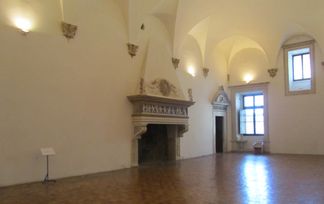 Inside the Palazzo Ducale, Urbino Inside the Palazzo Ducale, Urbino One of our more purposeful excursions was a visit to the town of Urbino. We had decided to spend the night and then head down the coastline of the Adriatic the next day. Urbino is most known for the huge, imposing Renaissance Palazzo Ducale of Frederico da Montefeltro. The size and splendor of this castle is impressive. We roamed the halls and salons and found most interesting the warren of kitchens, laundry rooms and stables in the sotteranei (basements). In these cellars, during the Second World War, 6,000 pieces of art were successfully hidden from the Nazis. Today the palace houses the Galleria Nazionale delle Marche. In the evening we found a restaurant tucked away on a backstreet. Empty at first it soon filled with locals and we enjoyed one the best meals of our stay in Le Marche. 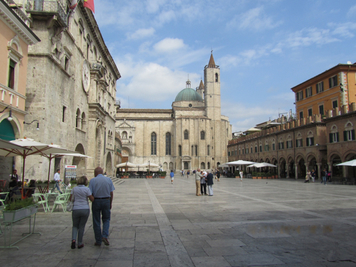 Piazza Popolo, Ascoli Piceno Piazza Popolo, Ascoli Piceno Another planned outing was a visit to the town of Ascoli Piceno. As often happened during our travels in this region, we had trouble finding our way, at least the route we had mapped out. Although frustrating at the time, it led to unexpected discovery and we always, eventually, reached our ultimate destination. The origin of Ascoli Piceno can be traced to the indigenous people of Italy, the Sabini. The center of the social life of the community is the beautiful Renaissance Piazza Popolo located on the site of the Roman forum constructed when the town was conquered by the Romans in 89 BC. The buildings surrounding the piazza are built with the native travertine stone and symbolically represent the three powers that be, religious (Church of San Francesco), political (Piazza dei Capitani) and commercial (Loggia dei Mercanti). We sat outside the beautiful and venerable Caffe’ Meletti watching the activity of life playing out before us on this travertine paved piazza. Of course we could not leave before buying a paper cone filled with the famous Olive all’ Ascolana from a street vendor. These tasty morsels are large olives stuffed, usually with salami, and then deep-fried. They are a famous gastronomical product of Ascoli Piceno. There is so much more I want to tell you about our amazing time in Le Marche. In my next blog post I will describe our experience of the grape harvest and the making of wine, our exploits into the Sibillini mountains, the ruins of the Roman town of Urbs Salvia, the beaches along the Adriatic coast and the people we met and friends we made.
Ciao e grazie, Andrea I am putting together a tour to Le Marche, probably in 2017. Are you interested? Write to me at [email protected] or use the contact page at travelinitalia.com 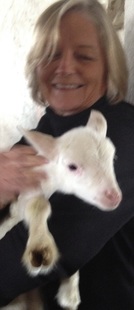 My new soft, furry friend My new soft, furry friend Have you ever held a baby lamb? Yes? OK, have you ever held a baby lamb in the Val d’Orcia, Toscana, Italy? This was just one of many surprises I had last Fall while visiting my friend, Giuseppe Giordano Muziarelli, in Contignano, Italy. After Jim and I had completed our 2 month stint taking care of a small vineyard in the Marche region of Italy (see future blog), we found our way to our favorite place in Tuscany, Giuseppe’s agriturismo, La Montalla. It always feels like coming home when we turn into the drive and see the beautiful, historic, stone farmhouse and are greeted by Giuseppe, his wife, Paolo and their helper, Donatella. This visit was prompted by the suggestion from Giuseppe that he and I create a wine tour of cellars and vineyards in Tuscany. Giuseppe is a prominent member of the agricultural community and has many friends in the viniculture there, so who better to partner with in such an undertaking? I was eager to get started. However, when we arrived, Giuseppe was in the middle of a 10-day, immersion program which he hosts for university students studying agriculture at the University in Pisa. This program, created by Giuseppe and a handful of other retired professors, gives students hands on, in-the-field experience in different areas of commercial agricultural, something that had not previously been included in their curriculum. Apparently, prior to this, students were not doing very well on the state tests they needed to pass in order to be employed in this field of expertise. These teachers have volunteered their time and energy to make this program happen. All stay in the second farmhouse Giuseppe and Paola own in Contignano, San Antonio. Their days are full and intense, field trips in the mornings to commercial farms and other agricultural sites, then back to Contignano for a lunch break, all afternoon writing and reviewing what they learned from the morning visits, an hour dinner break followed by discussions and critiques with the instructors until 1:00 in the morning! Jim and I were pleased to be invited to join the students and teachers as they visited various agribusinesses. Included were a dairy farm, an olive press cooperative frantoio, a large grain farm with an agriturismo, a vineyard and cellar and a sheep farm and creamery. One of the highlights for me was the sheep farm and creamery owned and operated by Julia and her husband, a young couple who shared with us the care and raising of the sheep and the processes involved in making and selling the products produced on their farm. Julia treated us to tastes of her pecorino cheese, milk and, my favorite, sheep’s milk yogurt drizzled with local honey. At the end of the visit we went into the barn to see the new crop of lambs. To my surprise, I was handed one of these little creatures to hold. What a soft, silky bundle of fur! Carissimo! The week included a pizza party at La Montalla. The huge stone oven was fed wood all afternoon to reach the temperature needed to cook the pizza. A retired, local baker prepared and cooked the pizza. Teachers, students, neighbors and friends gathered in the large dinning room where Paola and helpers kept the platters brimming with slices of pizza and the carafes full of wine. Laughter and lively conversation filled the room. Then it was time for the students to return to their studies. Later that night we climbed the stairs to our apartment, delighted to have been included in the experiences of the week but glad not to be included the late night study sessions. For more information about the agriturismo, La Montalla go to lamontalla.com To read about the wine tour Giuseppe and I put together go to travelinitalia.com and select "Tastes & Traditions of Tuscany". |
Andrea Aldrich
I am an artist, teacher and avid traveler. I love to share with like-minded individuals my favorite European country— Italy. Archives
April 2020
Categories |
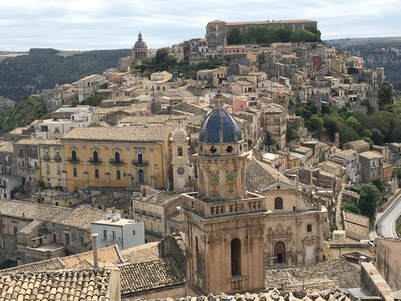
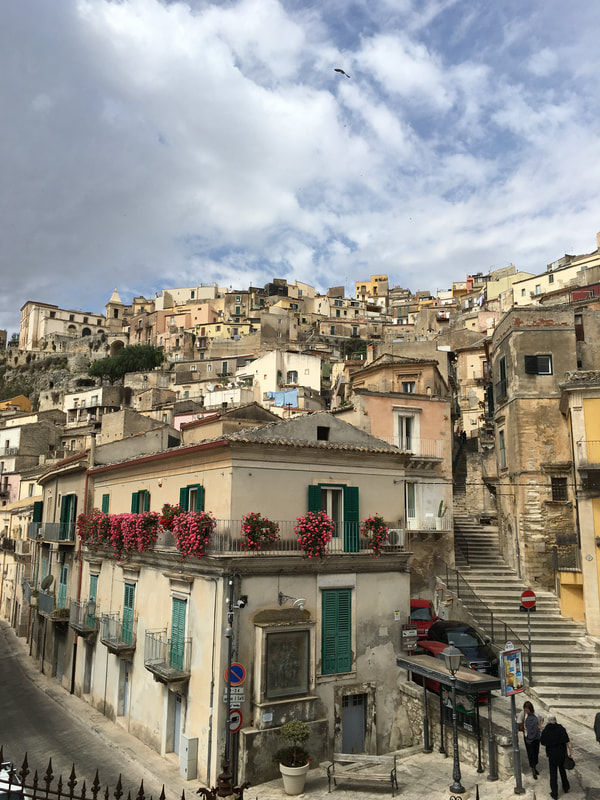
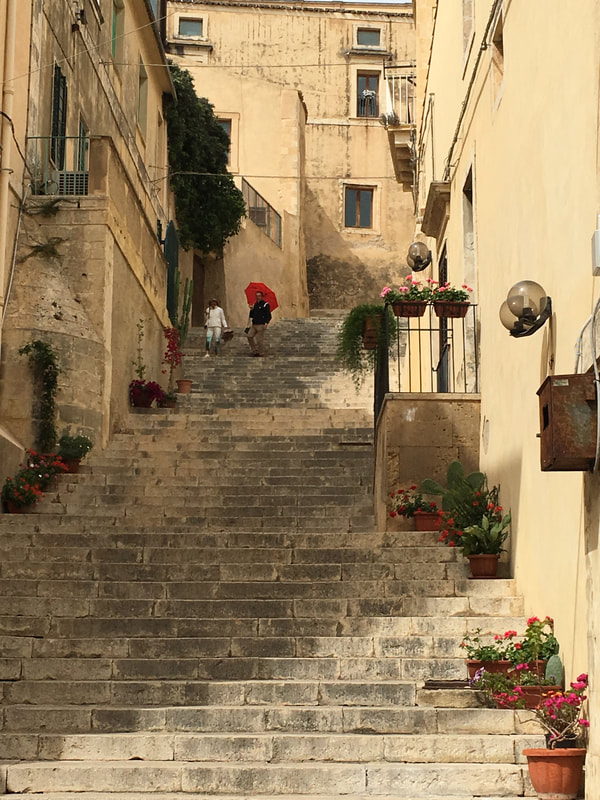
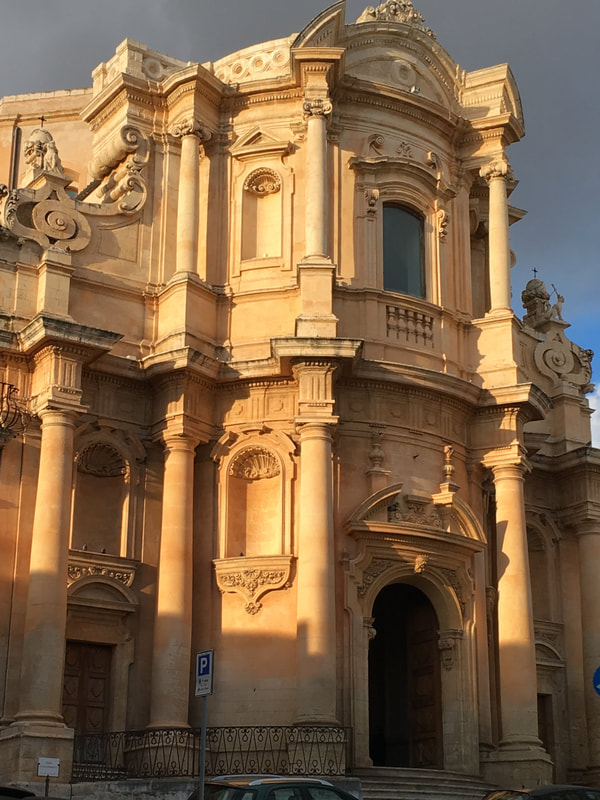
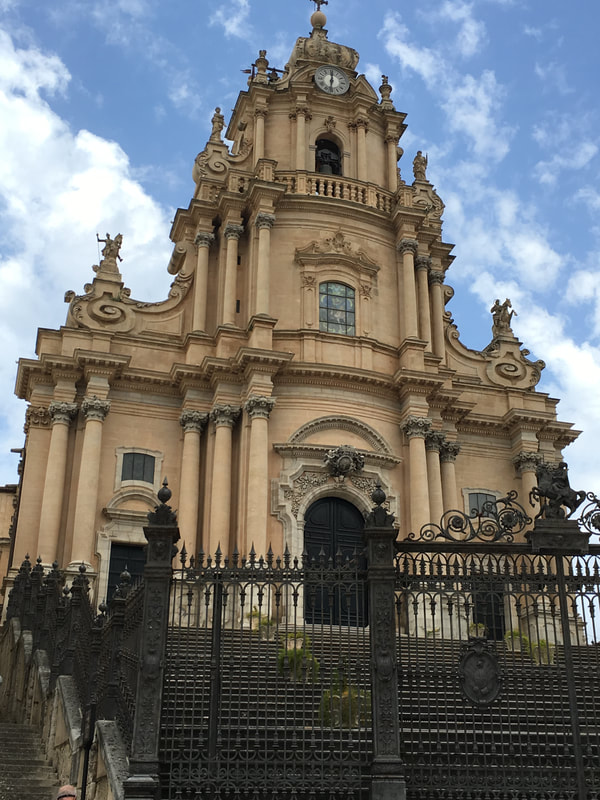
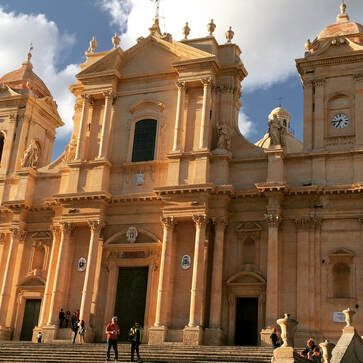
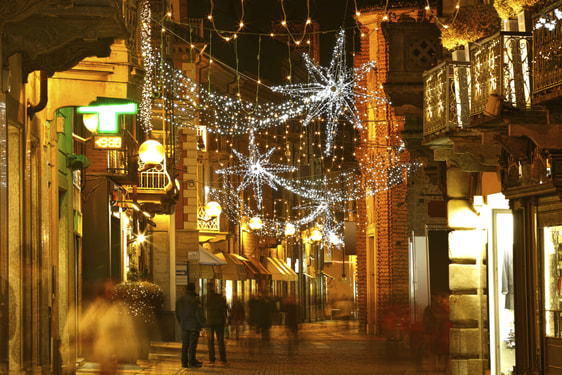
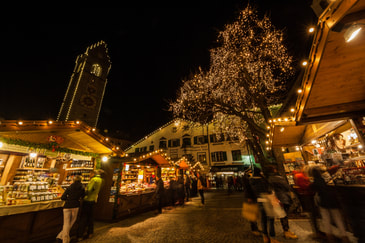
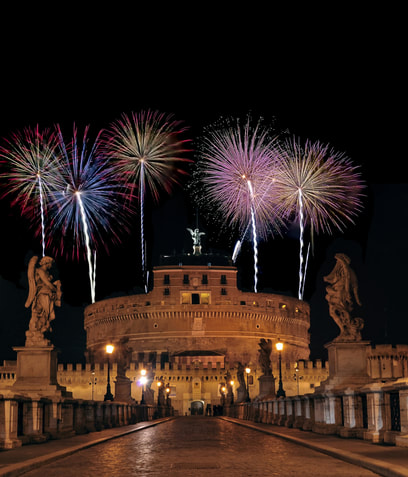
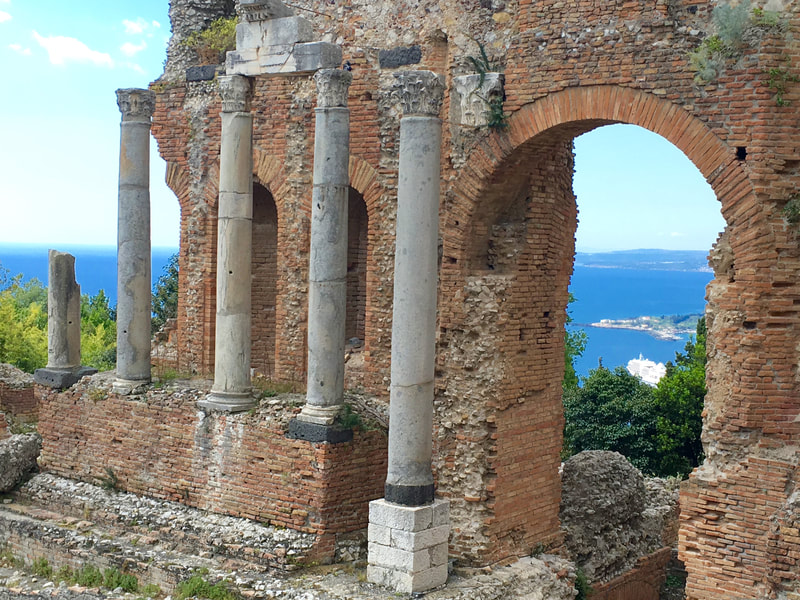
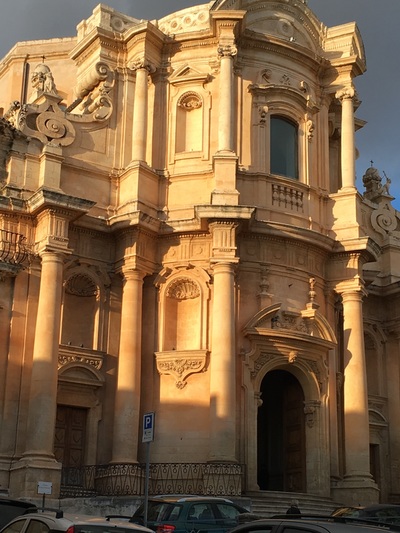
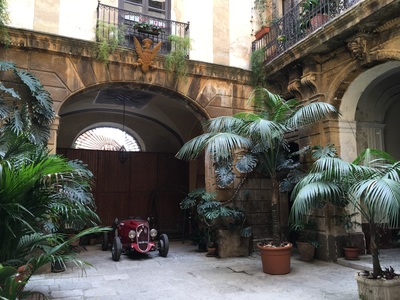
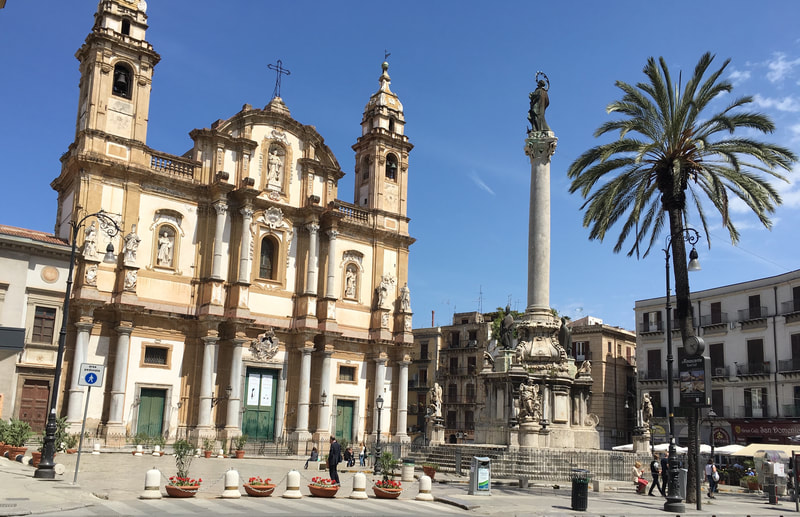
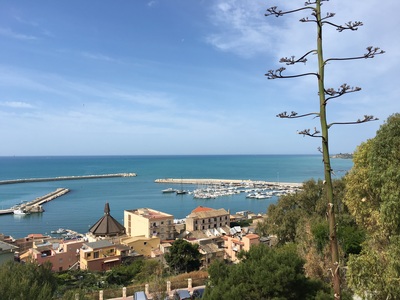
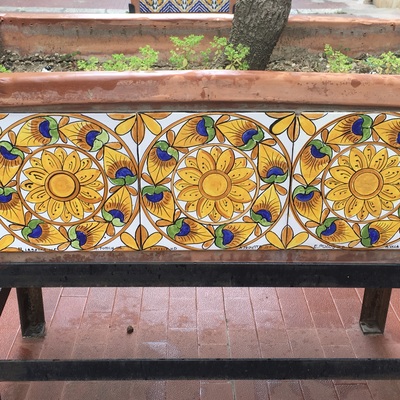
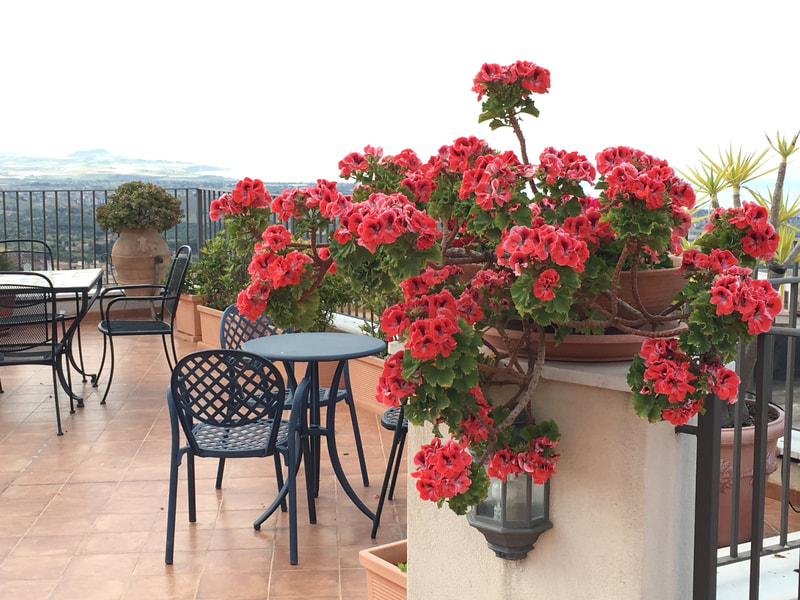
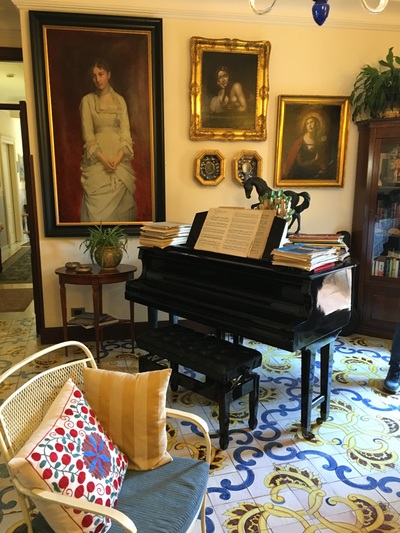
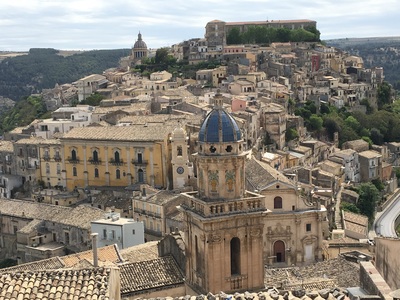
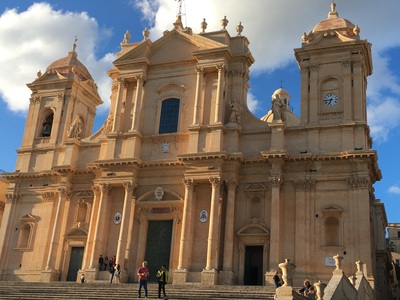
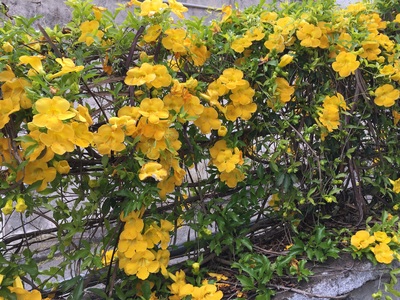
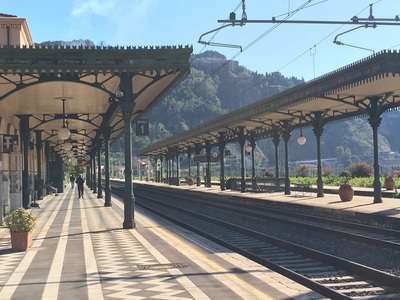
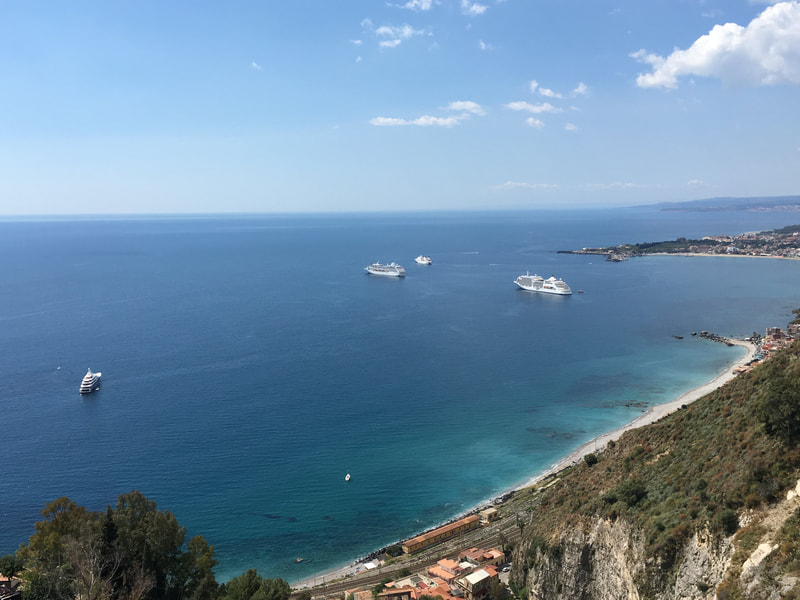
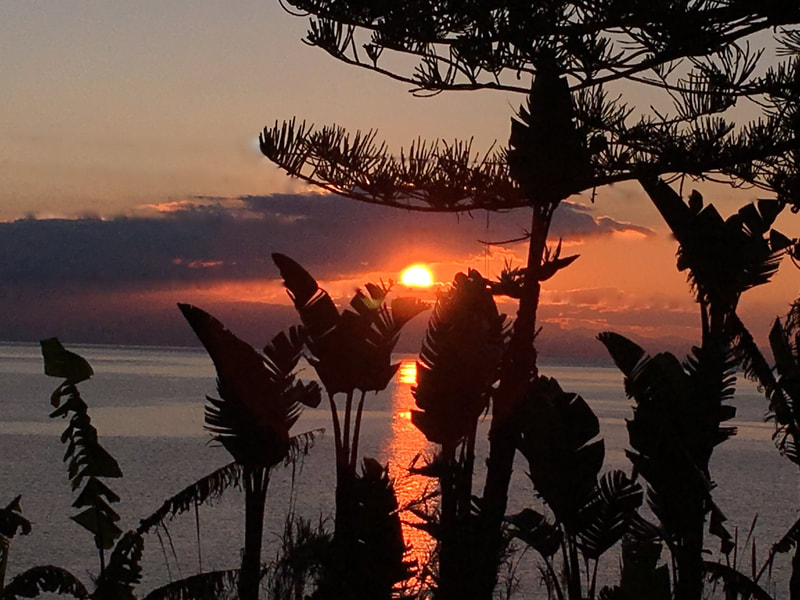
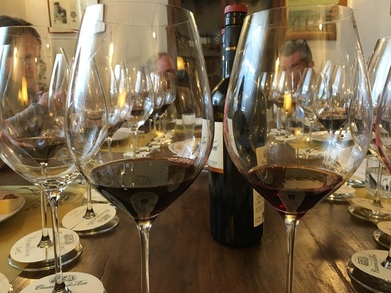
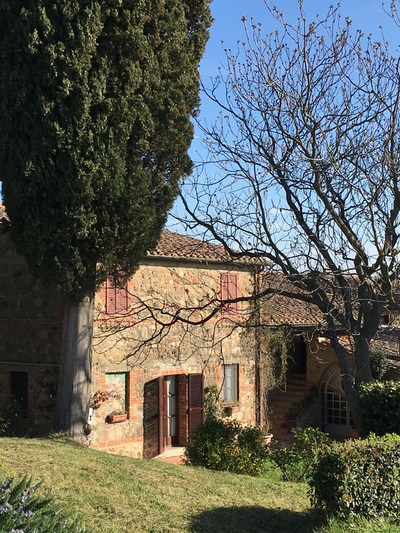
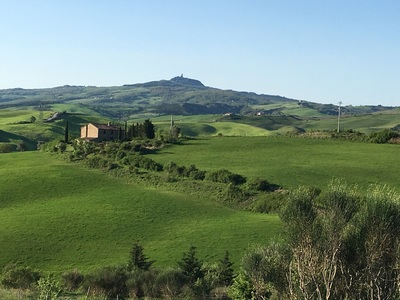
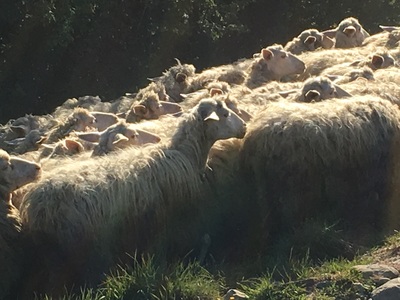
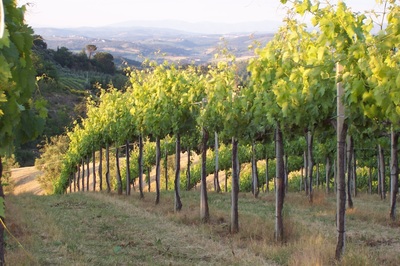
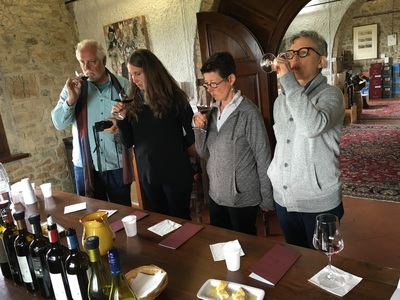
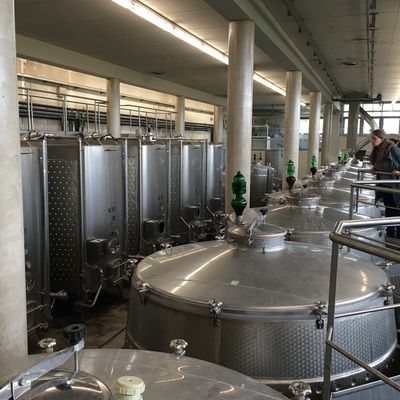
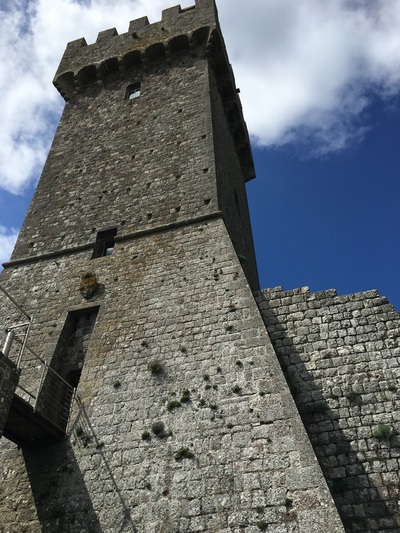
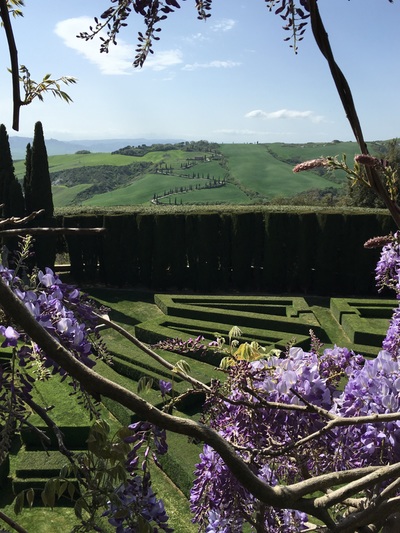
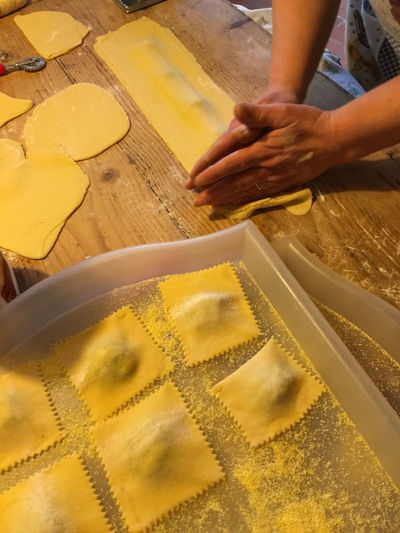
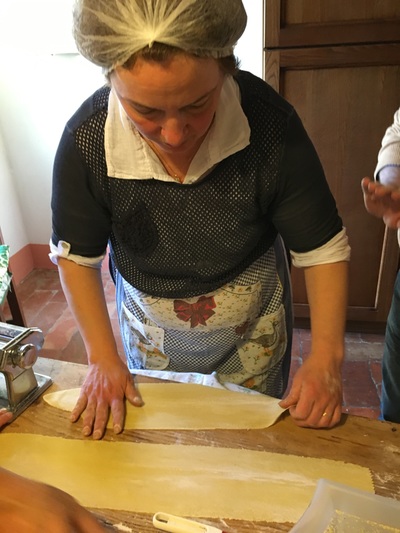
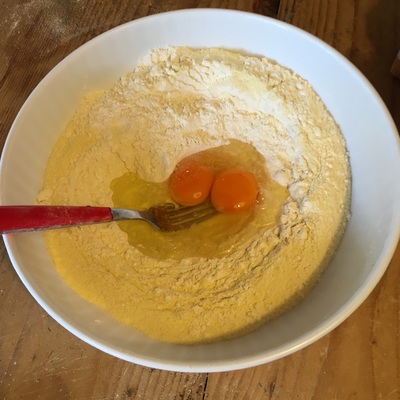
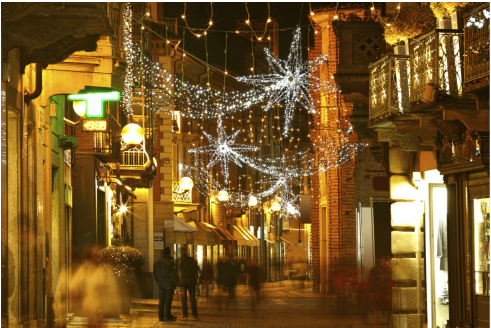
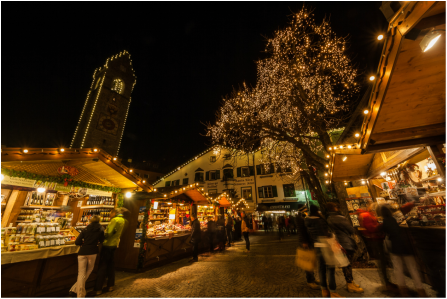
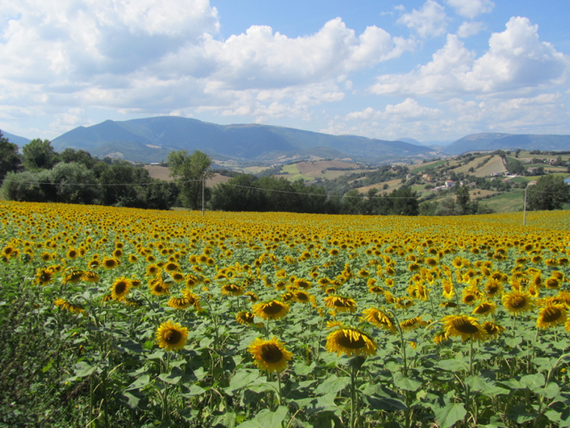
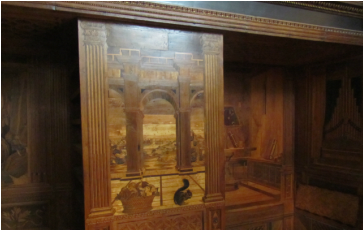
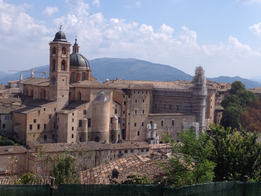
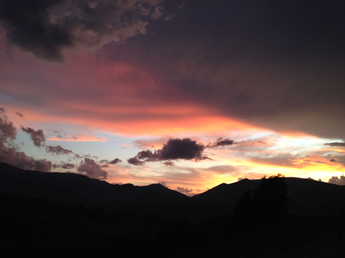
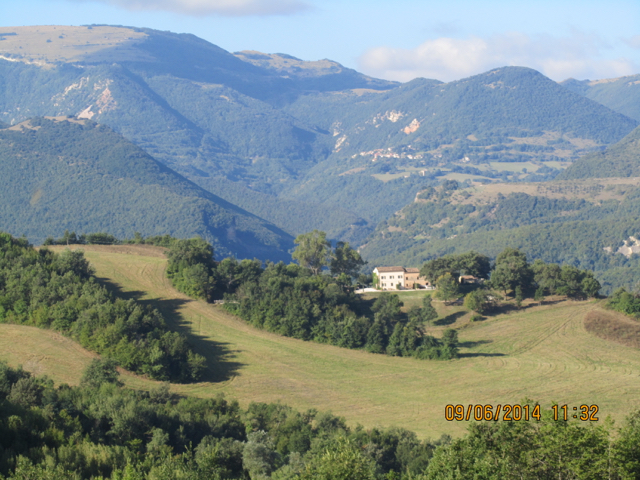
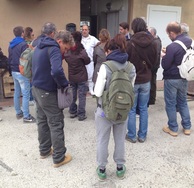
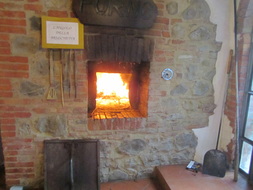
 RSS Feed
RSS Feed
